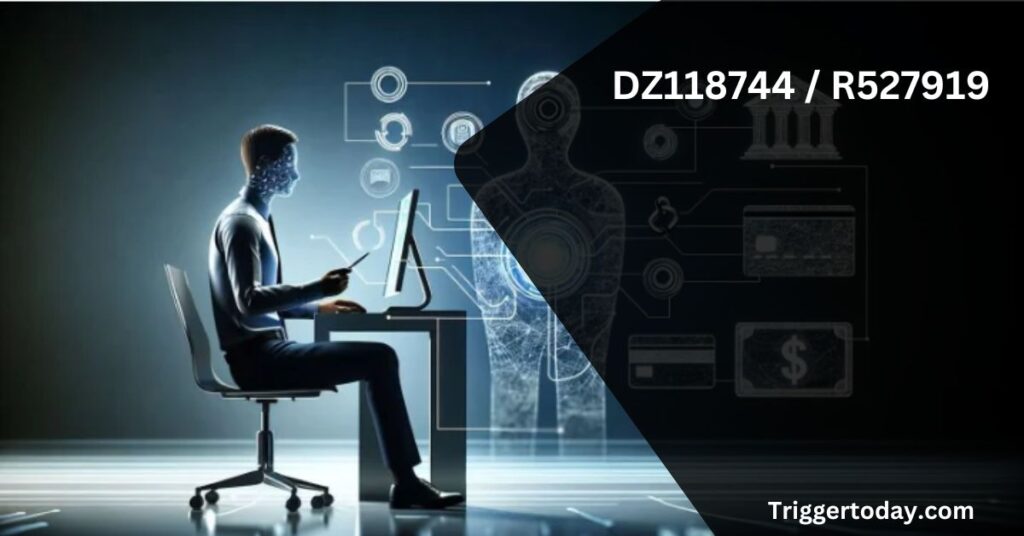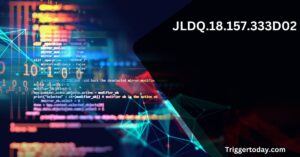Understanding DZ118744 / R527919: A Comprehensive Guide

In the world of technology, certain codes and identifiers play a crucial role in maintaining organization, security, and functionality. One such identifier is “DZ118744 / R527919.”
This article will delve into the significance of DZ118744 / R527919, explore its applications, and offer insights into its impact on modern technology. We aim to provide a comprehensive understanding suitable for readers in the USA, ensuring that the information is easily digestible and valuable.
Introduction to DZ118744 / R527919
DZ118744 / R527919 is more than just a string of characters. It represents a unique identifier used in specific technological frameworks. Understanding this code’s significance requires exploring its role in various systems and its impact on technology.
Decoding DZ118744 / R527919
What Is DZ118744 / R527919?
DZ118744 / R527919 is a unique identifier used to specify particular elements within technological systems. This code is carefully designed to ensure uniqueness and prevent conflicts between different elements in complex systems.
Historical Context and Evolution
The development of identifiers like DZ118744 / R527919 reflects the evolution of technology and data management. Initially, simple codes were used, but as technology advanced, more sophisticated identifiers were created to meet the growing needs for precision and security.
Applications and Uses
In Technology and Electronics
DZ118744 / R527919 plays a vital role in various technological applications. In electronics, such codes are used to track components, manage inventory, and ensure compatibility between different devices. For example, in manufacturing, DZ118744 / R527919 might be used to identify a specific batch of components, ensuring quality control and traceability.
In Data Management and Security
In data management, DZ118744 / R527919 is crucial for organizing and retrieving data efficiently. It helps in categorizing and indexing information, making it easier to access and manage. In security, unique identifiers like DZ118744 / R527919 are used to protect data integrity and prevent unauthorized access.
The Role of DZ118744 / R527919 in Modern Systems
Enhancing Efficiency
One of the key benefits of DZ118744 / R527919 is its ability to enhance efficiency in various systems. By providing a unique reference point, it simplifies processes and reduces errors. For instance, in inventory management, having a unique identifier like DZ118744 / R527919 helps in tracking items accurately, reducing the chances of misplacement or duplication.
Improving Security
Security is another critical area where DZ118744 / R527919 plays a significant role. Unique identifiers are essential for authentication and access control. In cybersecurity, DZ118744 / R527919 can be used to ensure that only authorized users can access sensitive information or systems.
Case Studies and Real-World Examples
Technology Sector
In the technology sector, DZ118744 / R527919 is used extensively to manage and track electronic components. For example, a tech company might use this identifier to track the production and distribution of microchips. This helps in maintaining quality control and managing supply chains effectively.
Data Management Sector
In data management, DZ118744 / R527919 is used to organize large volumes of data. For instance, a database system might use this identifier to tag and retrieve records efficiently. This ensures that data is organized in a way that makes it easy to access and analyze.
Challenges and Considerations
Security Concerns
While DZ118744 / R527919 offers many benefits, it also comes with certain challenges. Security is a major concern, as unique identifiers can be targeted by cybercriminals. Ensuring that DZ118744 / R527919 is protected against unauthorized access is crucial for maintaining security.
Technical Limitations
There are also technical limitations to consider. For instance, the implementation of DZ118744 / R527919 requires a robust system that can handle and process unique identifiers efficiently. Inadequate systems may lead to errors or inefficiencies.
Future Outlook
Trends and Innovations
As technology continues to evolve, so will the use and importance of unique identifiers like DZ118744 / R527919. Emerging trends in technology, such as artificial intelligence and blockchain, are likely to influence how these identifiers are used and managed.
Predictions for DZ118744 / R527919
Looking ahead, DZ118744 / R527919 is expected to become even more integral to technological systems. Advances in technology will likely enhance the capabilities of unique identifiers, making them more efficient and secure.
FAQs
Q1: What is DZ118744 / R527919 used for?
A1: DZ118744 / R527919 is a unique identifier used in technological systems for tracking, managing, and securing components and data.
Q2: How does DZ118744 / R527919 improve efficiency?
A2: By providing a unique reference point, DZ118744 / R527919 helps in accurate tracking and management, reducing errors and streamlining processes.
Q3: What are the security concerns related to DZ118744 / R527919?
A3: Security concerns include the risk of unauthorized access and cyberattacks. Proper protection and management are essential to mitigate these risks.
Q4: How is DZ118744 / R527919 used in data management?
A4: In data management, DZ118744 / R527919 helps in organizing and retrieving data efficiently by providing a unique tag for records.
Q5: What future developments are expected for DZ118744 / R527919?
A5: Future developments may include enhanced efficiency and security features, influenced by emerging technologies such as AI and blockchain.
Conclusion
DZ118744 / R527919 is more than just a code; it is a vital component of modern technological systems. Its role in enhancing efficiency, improving security, and organizing data makes it an essential element in various applications.
As technology advances, the importance of unique identifiers like DZ118744 / R527919 will only grow, driving innovation and ensuring more effective management of technological resources.




